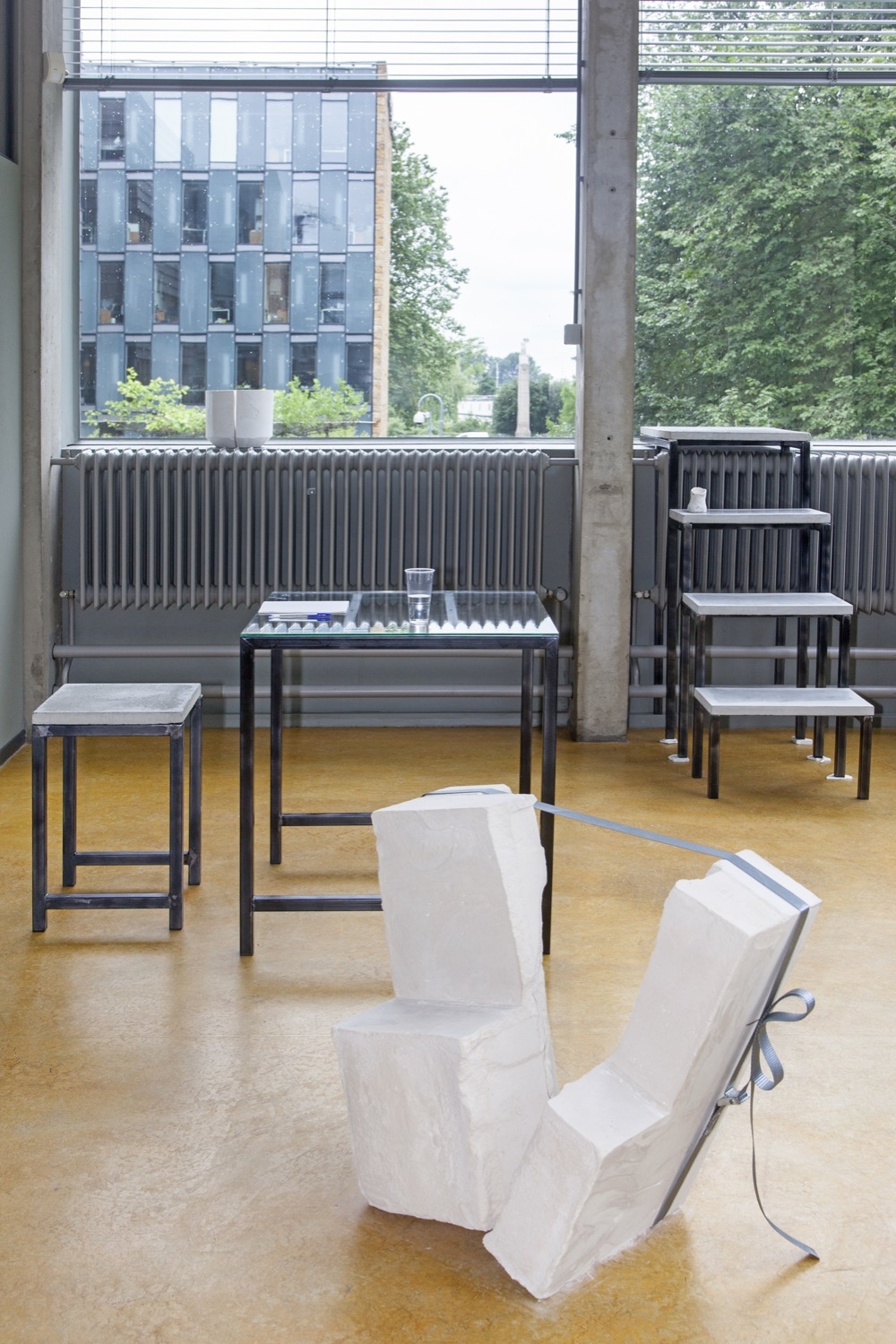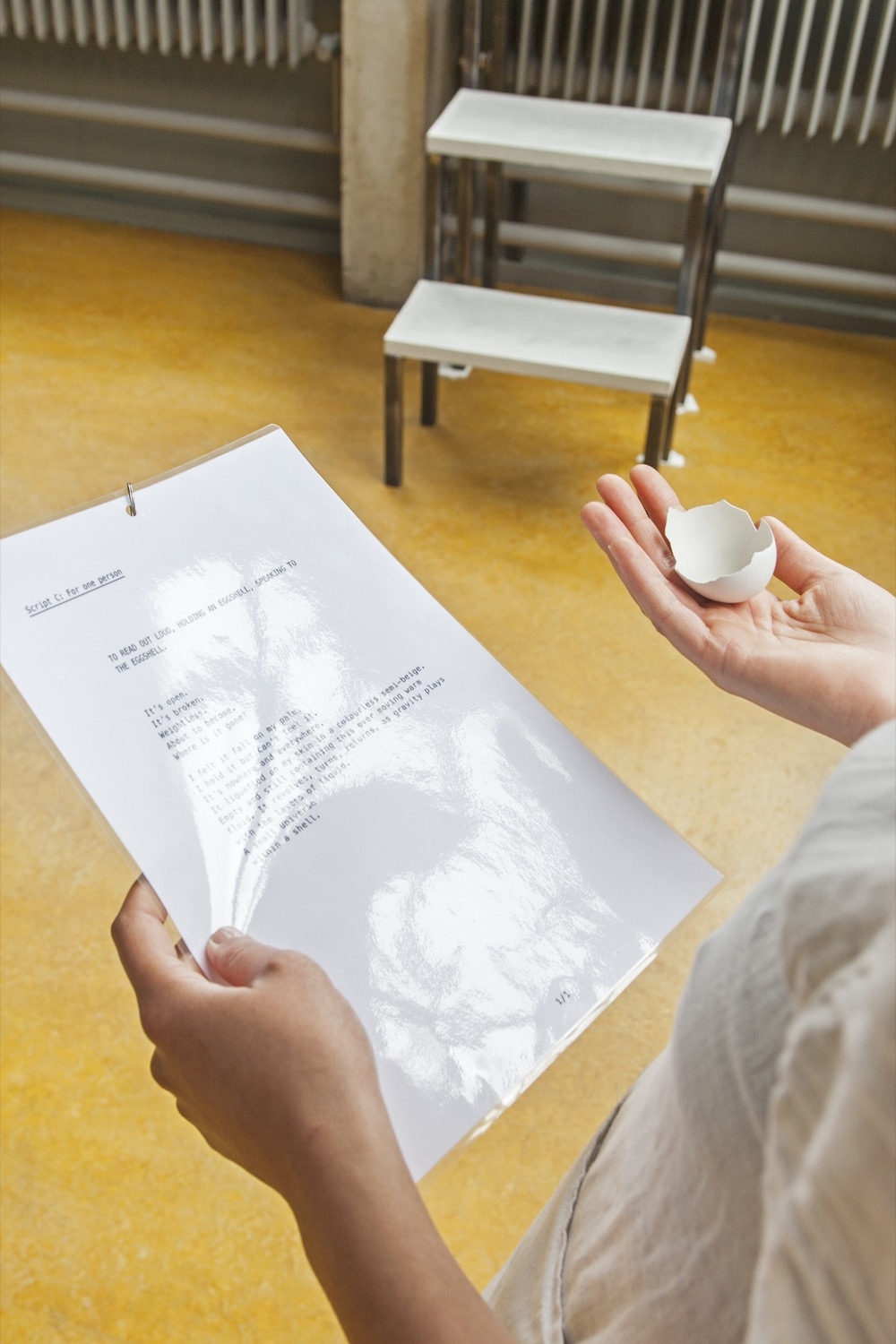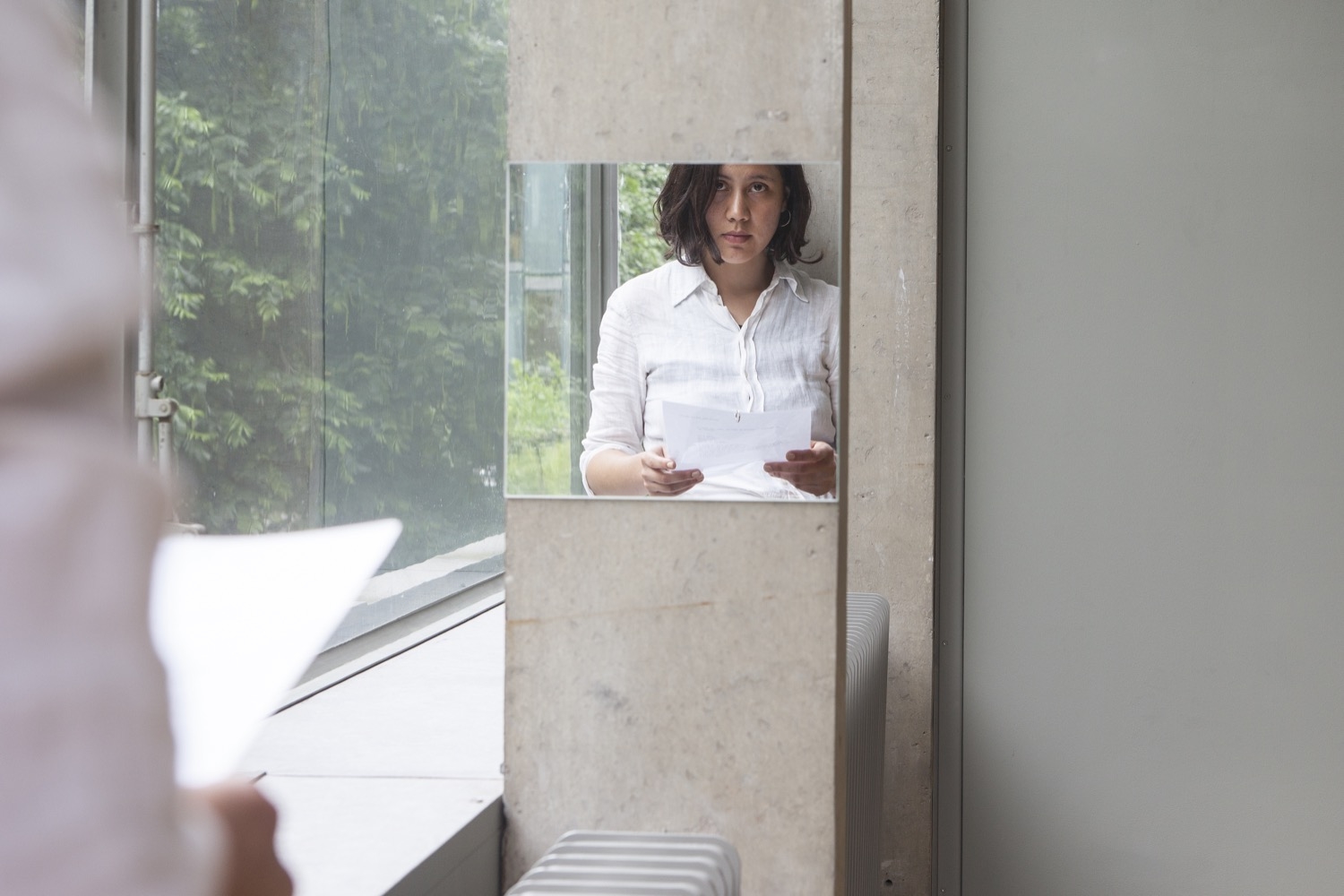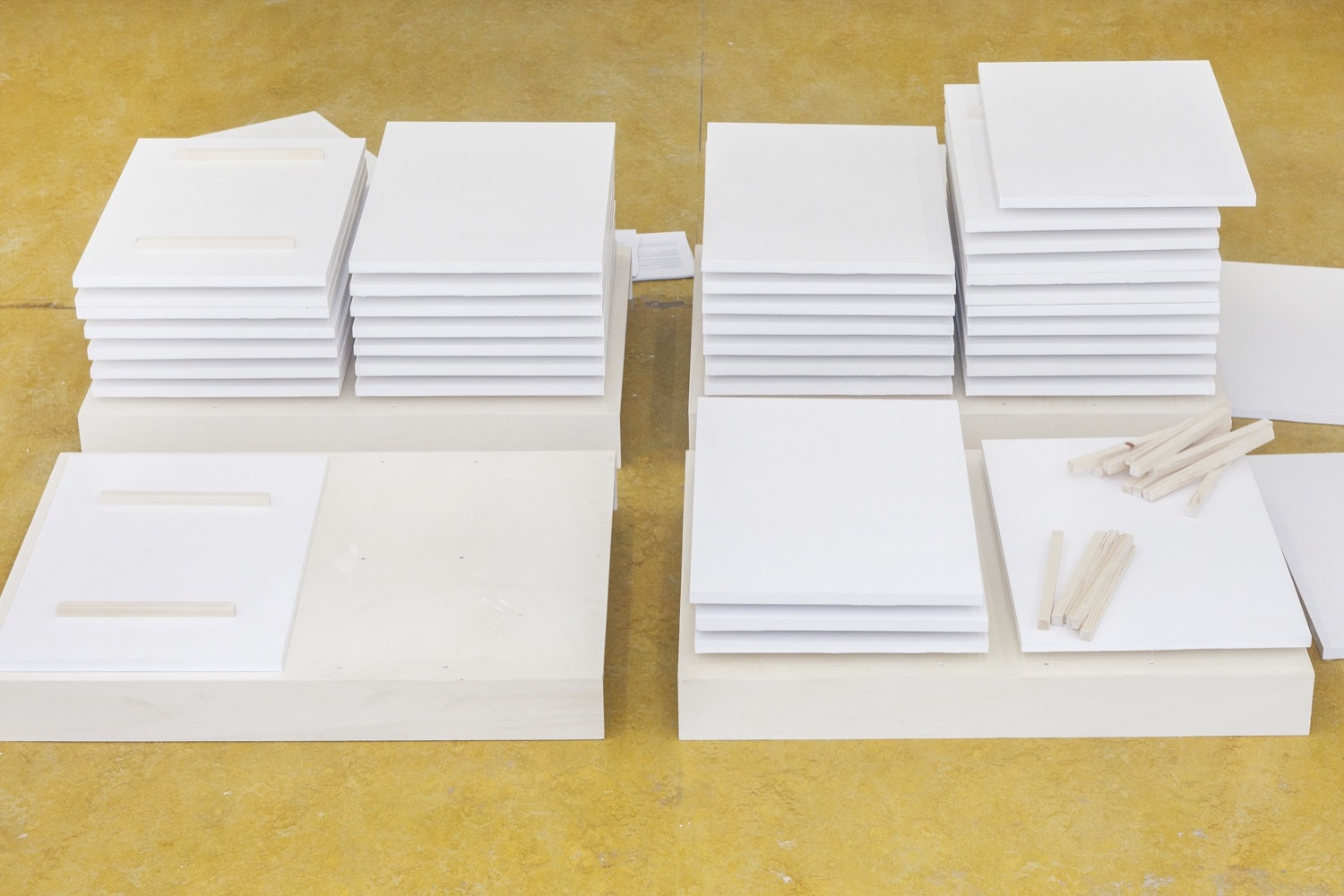
France, 1991
With you there’s always only two answers, a good one and a bad one + Come on, we’re in a conversation here
This work is not external to you. You have entered a room. You are now part of the work, a distinct element of its set, an article of its arrangement.
‘With you there’s always only two answers, a good one and a bad one’ and ‘Come on, we’re in a conversation here’ are two dialectical and complementary pieces. The first is public and collective, the second is private and domestic.
The first consists of a room; on the floor of the room a set of plaster tiles are displayed. Four instructions on how to interact with the tiles are transmitted by the artist to the first four visitors. Instructions are then passed on from visitor to visitor through a game of Chinese whispers. Transmitting the instruction is the requirement for giving up your task. It is up to each participant to choose who they pass their task onto. It is possible that not all visitors will be solicited. The responsibility of including the passive audience rests on the active audience.
The second consists of a room, props and a number of conversation scripts for one, two or three persons. Visitors are invited to choose a script and to perform it privately in the room without an audience. Only one script can be performed at a time.
Both pieces are driven by a desire to question interpretation and judgment, delegation and responsibility, participation and appropriation. Both pieces offer an experience based on a tension built between the production and its reception. If the visitors do not fulfil the instruction, there is no piece.
Who works? Who assesses? Who is responsible for fulfilling the piece? Who is responsible for the audience’s fulfilment?



